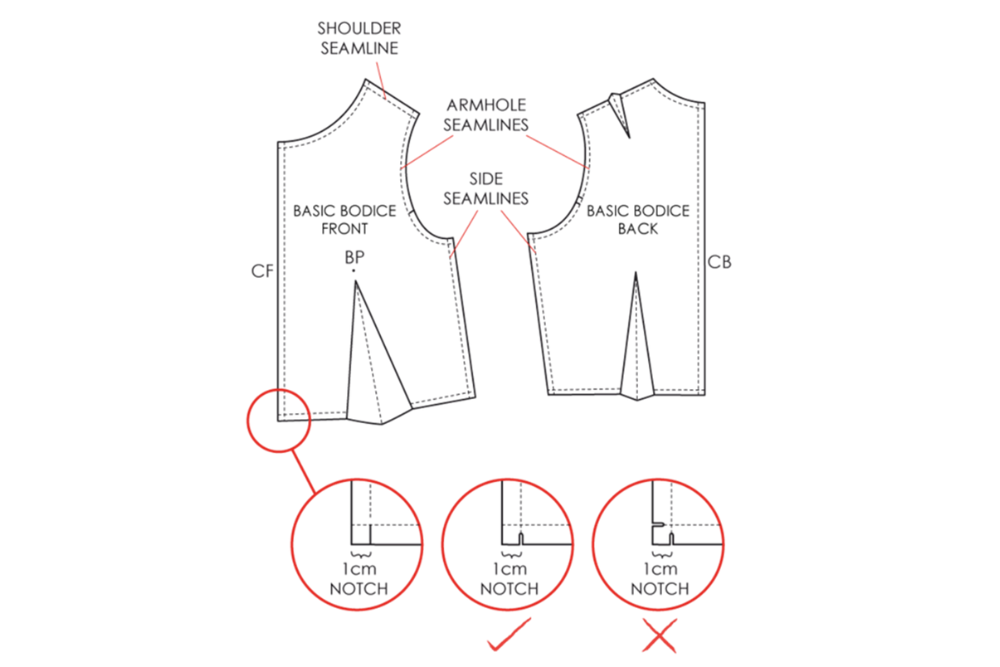Introduction
Pattern making is a fundamental skill in fashion design, bridging the gap between a designer’s creative vision and the tangible garment. It involves creating templates, or patterns, that serve as the blueprint for cutting and assembling fabric into wearable art. For beginners, understanding the basics of pattern making is essential to developing proficiency in garment construction.
- Introduction to Pattern Making
Pattern making transforms a designer’s sketch into a three-dimensional garment by providing precise templates for each piece. These patterns ensure that the final product fits well and aligns with the designer’s intentions. The process requires a blend of technical skill and creative insight, as it involves understanding body measurements, fabric properties, and design elements.
- Methods of Pattern Making
There are three primary methods used in pattern making:
- Drafting
Drafting involves creating patterns based on measurements derived from sizing systems or direct body measurements. This method emphasizes precision, as accurate measurements are crucial for achieving the desired fit. Drafting is often used to develop basic patterns, serving as the foundation for more complex designs.
Advantages:
- High level of customization based on individual measurements.
- Efficient for creating patterns that require specific fit adjustments.
Considerations:
- Requires meticulous measurement-taking to ensure accuracy.
- May involve complex calculations for pattern development.
- Draping
Draping is a technique where fabric is arranged and pinned on a dress form or mannequin to create a three-dimensional prototype of the garment. Once the desired shape is achieved, the fabric is marked and then transferred to paper to create the final pattern.
Advantages:
- Provides a realistic preview of how the garment will look and fit.
- Allows for creative exploration and manipulation of fabric.
Considerations:
- Time-consuming process that may require multiple fittings.
- Can be more expensive due to fabric waste and the need for dress forms.
- Flat Pattern Making
Flat pattern making involves developing patterns from basic blocks or slopers, which are simple, fitted templates that fit the body with minimal ease. Designers manipulate these blocks by adding or removing fullness, changing lines, or incorporating design details to create various styles.
Advantages:
- Efficient for producing multiple sizes through pattern grading.
- Suitable for mass production due to its systematic approach.
Considerations:
- Requires a solid understanding of pattern manipulation techniques.
- Initial development of basic blocks can be time-consuming.
- Essential Tools for Pattern Making
Equipping yourself with the right tools is crucial for effective pattern making. Some of the fundamental tools include:
- Pattern Paper: Specialized paper used for drafting patterns, available in various weights and transparencies
- Rulers: Straight rulers, curve rulers, and French curves assist in drawing accurate lines and curves.
- Measuring Tape: Essential for taking precise body measurements and marking pattern pieces
- Tracing Wheel: Used to transfer pattern markings onto fabric by creating dotted lines.
- Notcher and Awl: Tools for marking key points on patterns, such as notches for matching seams.
- Key Terminology in Pattern Making
Familiarizing yourself with common pattern making terms will enhance your understanding and communication within the field:
- Muslin: A plain-woven cotton fabric used for making prototypes or mock-ups of garments.
- Apex: The highest point on the bust, crucial for fitting patterns in women’s garments.
- Dart: A triangular fold sewn into fabric to provide shape and structure to a garment.
- Pleat: A fold of fabric, typically stitched down, that adds fullness and design interest.
- Selvage: The finished edge of a fabric that prevents it from unraveling.
- Pattern Grading: The process of creating patterns in multiple sizes by proportionally increasing or decreasing the dimensions
- Steps in Creating a Basic Pattern
Creating a basic pattern involves several methodical steps:
- Taking Accurate Measurements: Measure the key areas of the body to ensure the pattern will fit correctly.
- Selecting the Appropriate Method: Choose between drafting, draping, or flat pattern making based on the design and resources.
- Developing the Basic Block: Create a simple pattern that fits the body with minimal ease, serving as the foundation for design modifications.
- Adding Design Elements: Incorporate style lines, darts, pleats, and other design features to transform the basic block into the desired garment.
- Creating a Muslin Mock-Up: Sew a prototype using muslin fabric to test fit and design elements
- Making Adjustments: Refine the pattern based on feedback from the muslin fitting, ensuring comfort and aesthetic appeal.
- Finalizing the Pattern: Once satisfied with the fit and design, prepare the pattern for production, adding necessary markings and seam allowances.
